#compact coupé
Explore tagged Tumblr posts
Text
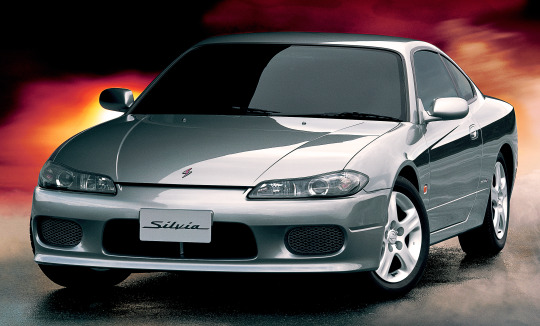
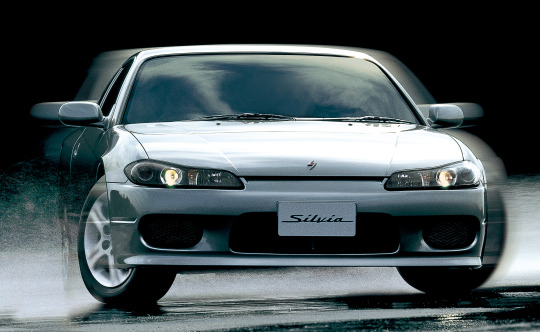
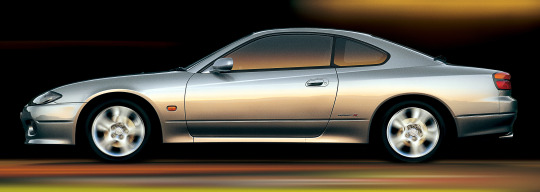
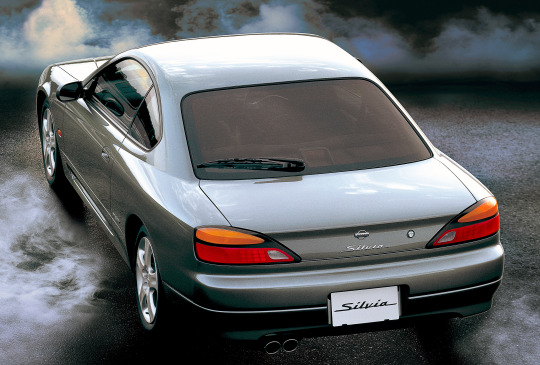
Nissan Silvia spec-R, 1999. The S15 series Silvia was Nissan's last compact rear wheel drive coupé. It was sold internationally as the 200SX. Production of the Silvia with Nissan's program to reduce its myriad of platforms. Producing of Nissan's S platform ended in August 2002, with the S15-series Silvia being the final variant.
#Nissan#Nissan Silvia#Nissan Silvia S15#Nissan Silvia spec-R#last of the line#rear wheel drive#sports coupé#compact coupé#1999#Nissan S-platform#end of the line
201 notes
·
View notes
Text



2010 VW Compact Coupé Concept
My tumblr-blogs: https://www.tumblr.com/blog/germancarssince1946 & https://www.tumblr.com/blog/frenchcarssince1946 & https://www.tumblr.com/blog/englishcarssince1946 & https://www.tumblr.com/blog/italiancarssince1946 & https://www.tumblr.com/blog/japanesecarssince1947
1 note
·
View note
Text
Los autos locos
Los Autos Locos es una serie animada producida por Hanna-Barbera que constó de 34 episodios con una duración de 10 minutos cada uno y fue inspirada en el film La carrera del siglo. Doblaje Wiki Nº 1 “El Rocomóvil” (Boulder Mobile) La serie hacía parodia a las carreras de autos, y a su vez estas eran de lo mas alocadas y bizarras. Tuvo algo único en su clase pues los antagonistas (Pierre…

View On WordPress
#A.I. Carr tem um club no Asphalt 9: Legends#Agustín López Zavala e Jesús Brock#alocadas y bizarras#antagonistas (Pierre Nodoyuna y su perro Patán)#corrida maluca hanna-barbera#Dick Vigarista#Don Messick#Eduardo Arozamena#Hanna-Barbera#Huckleberry Hound#inspirada en el film La carrera del siglo. Doblaje Wiki#Júlio Lucena#Los Autos Locos#Lout muttley#Nº 1 "El Rocomóvil" (Boulder Mobile)#Nº 10 "Troncos-Wagen" (Buzz Wagon)#Nº 2 "Espantomóvil" (Creepy Coupé)#Nº 3 "Súper Convertible" (Convert-a-car)#Nº 4 "Stuka-Rakuda" (Crimson Haybaler)#Nº 5 "Gato Rosa" (Compact Pussycat)#Nº 6 "Super Chatarra Special" (Army Surplus Special)#Nº 7 "Antigualla Blindada" (Bulletproof Bomb)#Nº 8 "Alambique Veloz" (Arkansas Chuggabug)#Nº 9 "Súper Heterodino" (Turbo Terrific)#parodia a las carreras de autos#paul winchell#personajes principales#Pierre Nodoyuna#serie animada#Super Ferrari
1 note
·
View note
Photo
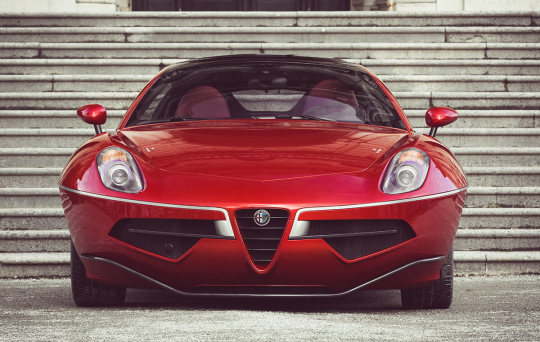
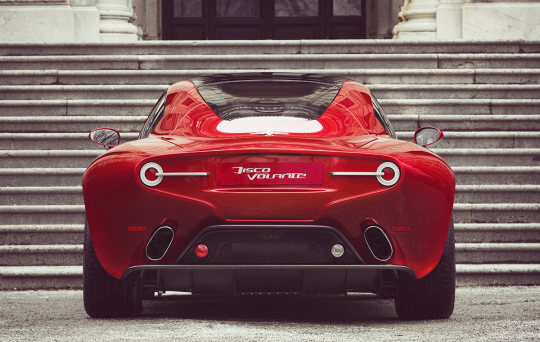
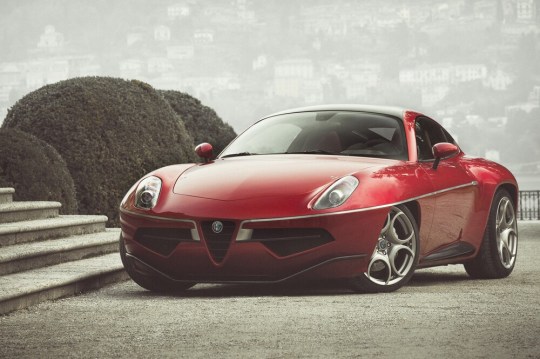
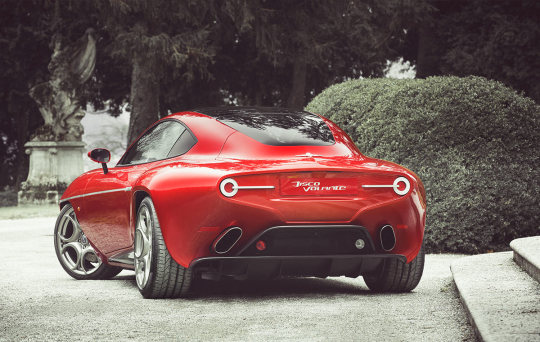
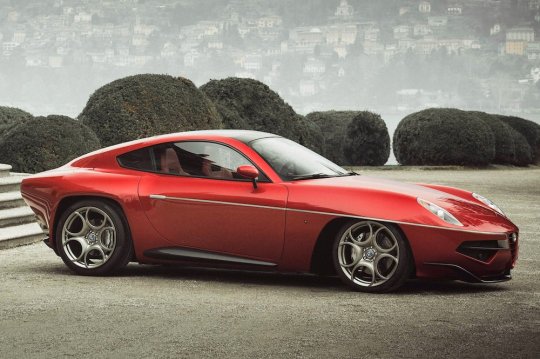
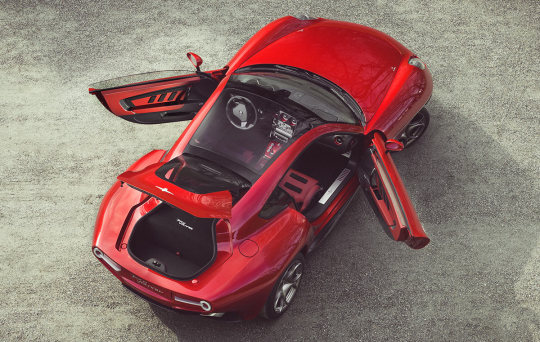

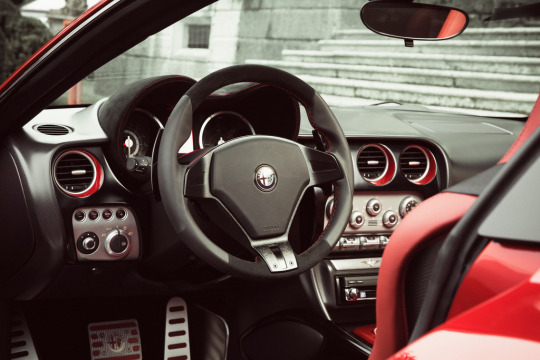
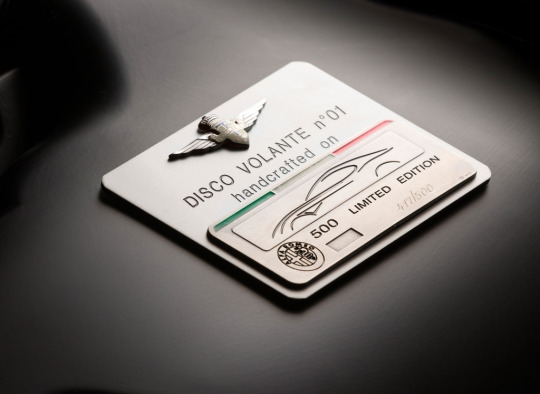
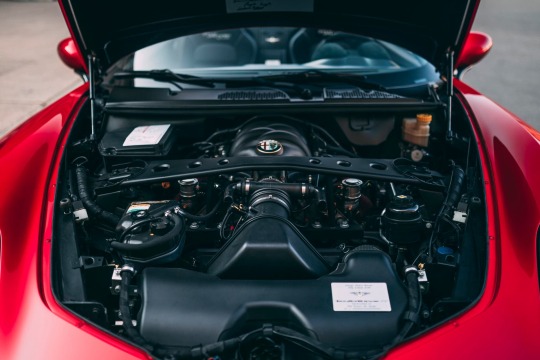
Alfa Romeo Disco Volante by Touring Superleggera
The Disco Volante is a two-seater Gran Turismo. It is based on the Alfa Romeo 8C Competizione coupé with its front-central mounted 4.7 litre V8 engine and a transaxle rear drive with unmodified specifications. Each unit, of which the construction requires 4,000 hours of manual work.The present Disco Volante celebrates the myth of the 1952 style icon. The new design briefing required to blend ingredients as innovation, emotion and aerodynamic properties into a timeless and essential shape.During the development stage, Head of Design Louis de Fabribeckers and his team cooperated with the engineers on an almost daily basis. “We focused on the preservation of the design essence. – says de Fabribeckers – Once the design frozen, we had to understand the manufacturing problems and solve them right away without compromising the design.”In consistency with the car’s design philosophy the interior has a ‘science fiction’ feel to it. Part of this ‘spaceship’ atmosphere was created by elements like the red LED interior light profiles. Also, aeronautics has been the inspiration for parts like the dashboard, instruments and seat adjustment lever.The Alfa Romeo 8C Competizione chassis was chosen for its light and rigid structure and its outstanding dynamic properties. Therefore it forms the perfect basis for the coach-built bodywork of the Disco Volante, integrally conserving the rolling chassis and drive train.The Alfa Romeo 8C’s steel space-frame and other structural elements were retained to guarantee torsion stiffness, high performance and the quality standard. The frame members and the central carbon cell remained unchanged. Elements of the underpinning and the body, such as the engine bay and firewall, the windscreen and cowl, the a-pillar and the locks and hinges have been retained too, just as the dashboard and instruments, the pedals and the steering wheel. Parts like doorframes, the roof frame and the c-pillar have been modified to match with the new shape.The layout of a front-central mounted engine, a transaxle transmission and rear-wheel drive offers an optimal weight distribution of 49-51% between the front and rear axles. To ensure excellent handling the front and rear double-wishbone suspension scheme is combined with hub carriers of forged aluminium and additional trailing arms for the rear suspension.The lightweight and compact 4.7 litre V8 engine delivers 450HP and 480Nm peak torque. It is coupled with a six-speed sequential transaxle gearbox with electronic control and paddle-shift gear selection. Together with a limited-slip differential and a state-of-the-art braking system with large diameter, ventilated discs a precise, dynamic and proactive drive is ensured. The Disco Volante can accelerate from 0 to 100 km/h (0-62 mph) in 4,2 seconds and has a top speed of about 290 km/h (181 mph).
All new and modified components of the Disco Volante have been CAD designed. In this process, which covers feasibility, safety, homologation, aerodynamics and structural analysis, the most advanced IT tools and simulation techniques have been used.
Since torsion stiffness and noise reduction are of critical importance, special attention has been paid to the under-body structure and its elements, like the tubular frames supporting the rear wings and bumper, and the roll bar joining the c-pillars. Other complex design issues were the tailgate hinges, the 3d-cambered door window, and the front wheel covers.
The Disco Volante was then submitted to a CFD aerodynamic study to enhance the airflow and ensure optimal downforce in the rear section. After that, FEM calculations were run to assess resistance and rigidity of all parts subject to homologation.
Touring Superleggera is synonymous with the manufacture of lightweight bodywork. The weight advantage of aluminium is one of the assets of Touring Superleggera’s construction methods. Nowadays however, the craft of hand-beating aluminium panels is combined with the use of carbon fibre reinforced plastic (CFRP). For the Disco Volante, Touring decided to use this combination of aluminium and CFRP. This has been the result of a study conducted to define optimal use of materials for the bodywork in terms of weight, resistance, precision, finish and quality, and ease of repair in case of damage.
The CFRP is used for specific components like the front bumper and grille, the bonnet, the skirts, the boot lid and the integrated rear-window frame. The bonnet and the boot lid are sandwich-built with Nomex filler in-between to obtain a better stiffness/weight ratio and to dampen vibration and noise.
The aluminium panels are hand-beaten using an epoxy mould. Since the inner frames of most parts of the bodywork are made of CFRP, this requires gluing of aluminium on carbon fibre. This technique adds to the rigidity as the glue has structural properties.
The body panels are pre-assembled on a laser measurement platform using a jig. This ensures that the strict tolerance required is respected. After adjustment, the panels are either welded or glued. The body-in-white is then used to preassemble and fit all trim components, brightware and moulding.
161 notes
·
View notes
Text
Alfa Romeo brille au prochain Salon de Bruxelles avec deux avant-premières mondiales
Alfa Romeo s’apprête à marquer les esprits lors de la 101ᵉ édition du Salon de l’Automobile de Bruxelles, qui se tiendra du 10 au 19 janvier 2025. La marque au Quadrifoglio dévoilera deux nouveautés mondiales : la série spéciale Intensa et la toute nouvelle Junior Ibrida Q4, deux incarnations de son héritage sportif et de son ambition technologique.

Une série spéciale qui sublime la gamme
La série Intensa, qui sera déclinée sur les Tonale et Stelvio, met à l’honneur l’identité distinctive d’Alfa Romeo. Ces modèles se distinguent par des éléments esthétiques exclusifs et des technologies de pointe, offrant une expérience de conduite unique. En exposant ces deux SUV au salon, Alfa Romeo espère captiver les visiteurs et séduire les passionnés de la marque.
Junior Ibrida Q4 : l’hybride compact par excellence
L’innovation ne s’arrête pas là. La Junior Ibrida Q4, dévoilée pour la première fois à l’international, enrichit la gamme compacte d’Alfa Romeo avec une motorisation hybride inédite. Ce modèle combine un moteur électrique à l’avant, intégré dans une transmission automatique à six rapports, et un autre moteur électrique à l’arrière. Cette configuration permet une transmission intégrale sans liaison mécanique entre les essieux, optimisant ainsi la répartition du couple et garantissant une traction exceptionnelle dans toutes les conditions.
La Junior 280 Veloce, version la plus performante de ce modèle, sera également exposée. Elle incarne l’esprit sportif d’Alfa Romeo en alliant excellence mécanique, technologies avancées et un design audacieux conçu par le Centro Stile. Compacte et dynamique, cette voiture est une promesse d’émotions fortes pour les amateurs de conduite urbaine et sportive.
L’élégance intemporelle de la 33 Stradale
Le public pourra également admirer la nouvelle 33 Stradale, véritable chef-d'œuvre automobile produit en seulement 33 exemplaires. Inspirée de son iconique prédécesseur de 1967, cette coupé deux places associe design artisanal et technologies de pointe. Un hommage vibrant à plus d’un siècle de sportivité italienne.
Une vision tournée vers l’avenir
Avec ces nouveautés, Alfa Romeo affirme une fois de plus son engagement envers l’innovation et l’excellence. En combinant son riche patrimoine et ses ambitions modernes, la marque souhaite séduire tant les puristes que les amateurs de solutions électriques et hybrides. Le Salon de Bruxelles 2025 s’annonce donc comme une étape clé dans la trajectoire de cette légendaire maison italienne.
Rendez-vous en janvier pour découvrir ces modèles qui promettent d’écrire un nouveau chapitre de l’histoire d’Alfa Romeo.
2 notes
·
View notes
Text
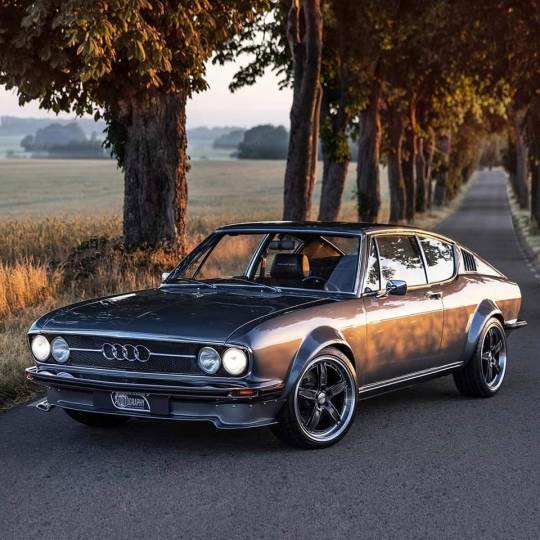
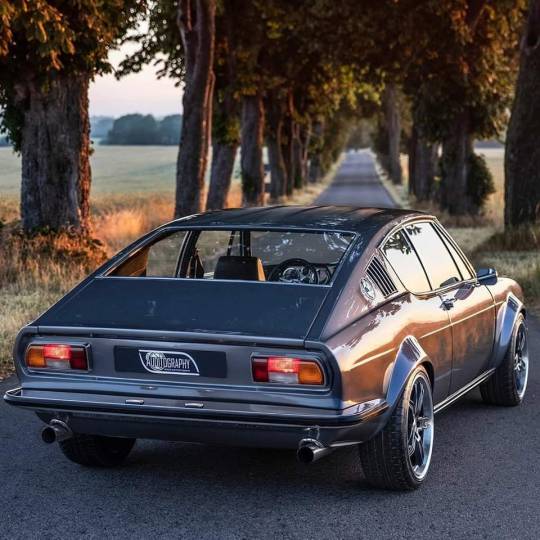
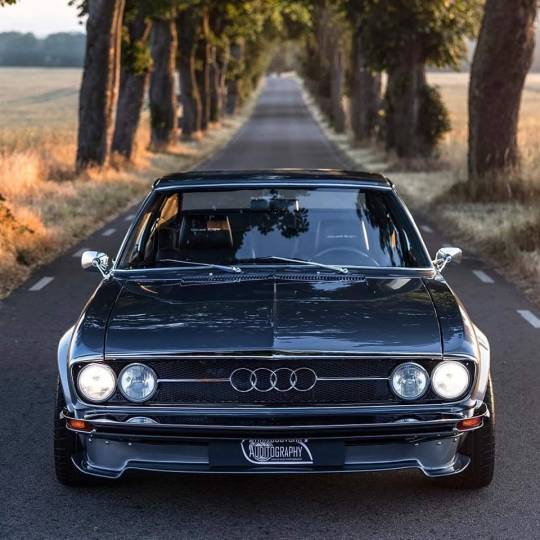
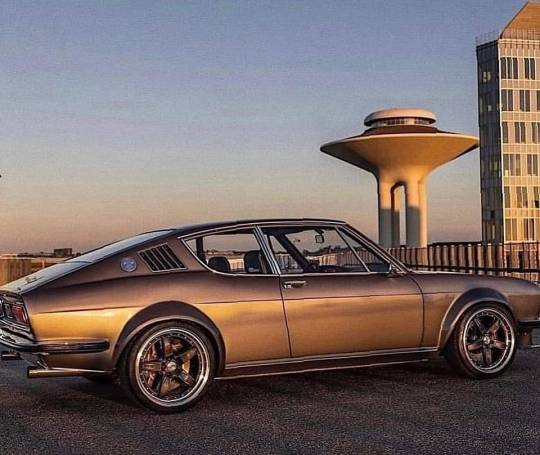
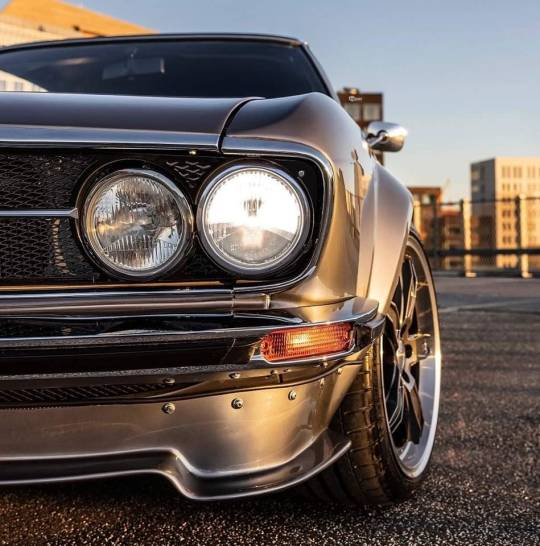
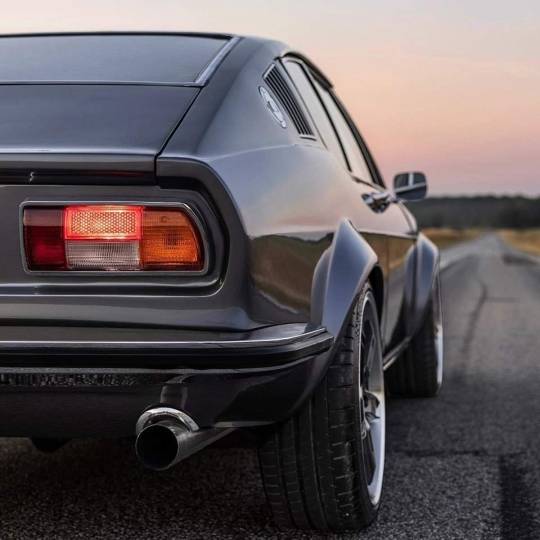


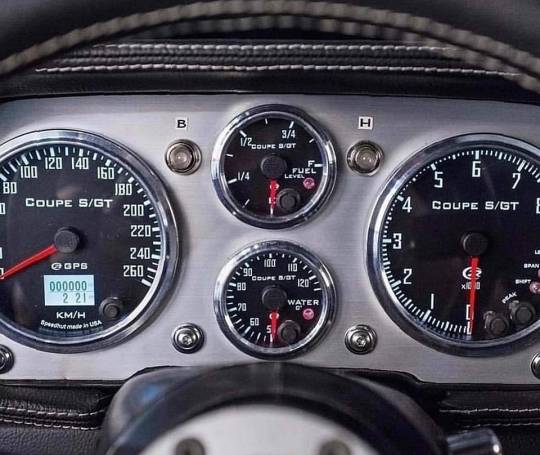
The Audi 100 Coupé S/GT is a mid-class coupe that was introduced by Audi in 1970. This model was characterized by a stylish design characteristic to the coupe of that period
The main technical specifications of Audi 100 Coupé S / GT included:
Engine: The vehicle was equipped with a petrol 1.9-liter four-cylinder engine that usually produced about 113 horsepower
Gearbox: There were two versions of the gearbox - four-speed mechanical and three-speed automatic
Design: Audi 100 Coupé S / GT had an attractive design with round shapes and relatively compact sizes
Interior: The cabin was comfortable and comfortable for the two front passengers, but the back row of seats was already less comfortable due to limited space
Popularity: Audi 100 Coupé S/GT was produced in small numbers, making it a more exclusive car
This model is known for its stylish and sporty appearance, and she left a mark in Audi history
Today, the Audi 100 Coupé S/GT is valued by collectors as a rare car, emphasizing its special status in automotive history
3 notes
·
View notes
Text
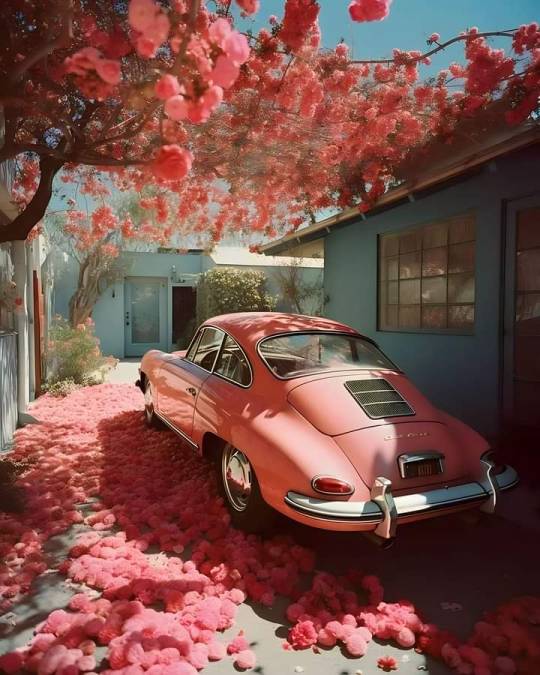
1958 Porsche 356 A Coupe
The Porsche 356A (T2) Speedster September 1957 to August 1958 (Carrerra Speedsters continued into 1959)
The last of the 356A Speedsters are probably the most attractive and the most desirable. The 356A (T2) Speedster was introduced in September 1957 and continued until the basic Speedster was replaced by the Convertible D in August 1958 although a number of Carrera, GS and GT Speedsters were produced in 1959.
History:
Ferdinand Porsche and the foundation of the Porsche Company
Ferdinand Porsche was born on September 3rd 1875, in the Bohemian village of Maffersdor. After attending grammar school and Staatsgewerbeschule (State Vocational School) in Reichenberg, he entered his father's metalworking business. The young and imaginative Ferdinand pursued a fascination with electricity working on the design of an electric car and in 1900 The Lohner-Porsche electric car is presented at the World Fair in Paris. Porsche's wheel hub engines brought the young engineer international attention. In the same year, he developed an all-wheel-drive racecar, as well as a hybrid petrol/electric vehicle.
In 1906 Ferdinand Porsche became Technical Director at Austro-Daimler in Wiener Neustadt. At the age of only 31, he became responsible for the model range of one of Europe's largest automotive concerns.
In September1909 Ferdinand's first son, Ferdinand Anton Ernst Porsche, later known as 'Ferry', was born. In 1910 The Austro-Daimler touring car designed by Ferdinand Porsche scores a triple victory in the Prince Henry Trials.
In 1923 as Technical Director and Board Member of the Daimler-Motoren-Gesellschaft in Stuttgart, Ferdinand Porsche was responsible for the design of the legendary Mercedes Compressor Sports Car and in the following year, he led the development of the 2-litre racecar won the Targa Florio. The Mercedes-Benz S-Type models dominate international motorsport from 1927.
Professor Ferdinand Porsche 1875-1951
In 1931 Ferdinand Porsche founded the company that bears his name "Dr. Ing. h. c. F. Porsche GmbH" to provide 'engineering and consultation on engine and vehicle design'. Based in Stuttgart the company carried out projects for manufacturers such as as Wanderer, Zündapp and NSU. In 1933 Porsche developed a Grand Prix mid-engined 16-cylinder racecar for Auto Union. He also developed a rear engined compact vehicle concept for NSU.
One year later the Porsche company received an official order for the design and construction of a German 'Peoples Car' or Volkswagen. The prototype was developed and assembled in the garage of the Porsche villa in Stuttgart and was road tested within 12 months At the same time production facilities were being set up for the Volkswagen which was officially called the 'KdF-Wagen'.
In December 1935 Ferdinand Alexander Porsche the first son of Ferry Porsche (and later known as 'Butzi') was born in Stuttgart.
During 1939 Porsche developed 3 racing coupés for long-distance endurance competition. These 'BerlinRome-Wagens' could be considered the forerunners of later Porsche sports cars.
He also designed the Mercedes T-80 in1939 to conquer the world land speed record. It was reputed to have a 3000 hp aircraft engine.
Because of the outbreak of the second world war Volkswagen production was diverted towards the military version of the Beetle, the Kübelwagen and Schwimmwagen. Only 1207 Volkswagen KdFs were built between 1941 and 1944
Porsche also designed several heavy tanks but did not get the production contract. Towards the end of the war the Porsche Engineering office moved to the relative safety of Gmünd in the Austrian province of Carinthia.
After the war the Volkswagen factory at Wolfsburg was taken over by the British and Ferdinand Porsche was arrested and imprisoned in France for 20 months.
In 1946 under the direction of Ferdinand Porsche's son Ferry, the Porsche Engineering office became involved in the design of an all-wheeldrive Grand Prix racecar for an Italian industrialist, Piero Dusio.
Ferry Porsche saw a market for a small, light two seater roadster and was unable to find a car in the market that matched his preference. He decided to build a car which became the first 356 and the first sportscar to bear the Porsche name.
4 notes
·
View notes
Text
Discover the new Skoda Enyaq 2025 at Alfa rent a car Cluj
Electric evolution, revolutionary design and performance that takes you further. With a range of up to 590 km, fast charging in just 28 minutes and a spacious interior that combines sustainability with elegance, the Enyaq 2025 redefines modern driving.
✔️Modern Solid Design with innovative details ✔️Three electric engines for every lifestyle ✔️Simply Clever features that simplify your every journey
Starting today, you can order it in Romania and other European markets. Prices start from €44,000.
Enter the world of Škoda and find out more:

0 notes
Text
Tondeuse Autoportée Honda : L’Excellence pour un Jardin Impeccable
Entretenir un grand jardin peut être une tâche exigeante, mais avec une tondeuse autoportée Honda, cette corvée devient un plaisir. Réputée pour ses performances, sa robustesse et sa fiabilité, cette gamme de tondeuses offre une solution idéale pour transformer l’entretien de votre pelouse en une expérience facile et efficace. Découvrez pourquoi choisir une tondeuse autoportée Honda est un investissement judicieux pour votre espace extérieur.
Pourquoi Choisir une Tondeuse Autoportée Honda ?
Technologie et Performance Les tondeuses Honda sont équipées de moteurs puissants et fiables, garantissant une coupe nette, même sur des terrains difficiles. Leur technologie avancée permet une tonte rapide et homogène, idéale pour les grandes surfaces.
Ergonomie et Confort Les tondeuses autoportées Honda sont conçues pour offrir une utilisation confortable grâce à :
Un siège ergonomique réglable pour réduire la fatigue.
Une direction intuitive et fluide pour une maniabilité optimale.
Des commandes simples et accessibles, parfaites pour les utilisateurs débutants comme expérimentés.
Polyvalence Dotées de plusieurs hauteurs de coupe réglables, ces tondeuses s’adaptent facilement aux besoins spécifiques de votre pelouse, qu’il s’agisse d’une coupe courte ou d’un gazon plus dense. Certaines versions proposent des options supplémentaires, comme le mulching ou le ramassage intégré, pour répondre à toutes les attentes.
Durabilité et Fiabilité La marque Honda est reconnue pour la robustesse de ses produits. Une tondeuse autoportée Honda est construite pour durer des années tout en offrant des performances constantes, même en cas d’utilisation intensive.
Les Avantages d’une Tondeuse Autoportée Honda
Gain de Temps : Une tondeuse autoportée permet de couvrir de grandes surfaces en un temps record.
Économie d’Énergie : Grâce à leur efficacité énergétique, les moteurs Honda consomment moins de carburant tout en offrant des performances exceptionnelles.
Entretien Facile : Les modèles Honda sont conçus pour un entretien minimal, avec des pièces faciles à nettoyer et à remplacer.
Silence et Écologie : Ces machines sont non seulement puissantes mais également respectueuses de l’environnement grâce à des technologies réduisant les émissions sonores et polluantes.
Comment Bien Choisir Votre Tondeuse Autoportée Honda ?
Évaluez la Taille de Votre Jardin
Pour des surfaces moyennes, optez pour un modèle compact avec une largeur de coupe adaptée.
Pour les grands terrains, privilégiez un modèle doté d’une large capacité de tonte et d’un moteur plus puissant.
Prenez en Compte le Type de Terrain Les tondeuses Honda sont parfaites pour les terrains plats ou légèrement inclinés. Pour des terrains plus complexes, choisissez un modèle avec une bonne traction ou quatre roues motrices.
Considérez les Options Supplémentaires
Mulching : Transforme l’herbe coupée en engrais naturel.
Système de Ramassage : Idéal pour un jardin toujours propre.
Accessoires de Remorquage : Parfaits pour élargir l’utilisation de votre tondeuse.
Conseils pour Maximiser la Durée de Vie de Votre Tondeuse Honda
Nettoyez régulièrement la lame et le carter pour éviter les accumulations d’herbe.
Vérifiez le niveau d’huile et l’état des filtres à air pour maintenir les performances du moteur.
Entreposez la tondeuse dans un endroit sec et à l’abri des intempéries.
Faites un entretien annuel pour garantir une utilisation optimale et prolonger la durée de vie de la machine.
Pourquoi Opter pour une Tondeuse Autoportée Honda ?
Avec une tondeuse autoportée Honda, vous combinez innovation, confort et efficacité pour transformer la corvée de la tonte en une tâche rapide et agréable. Ces machines sont idéales pour les jardiniers passionnés ou les propriétaires de grands espaces verts qui recherchent un entretien impeccable tout en économisant du temps et des efforts.
0 notes
Text
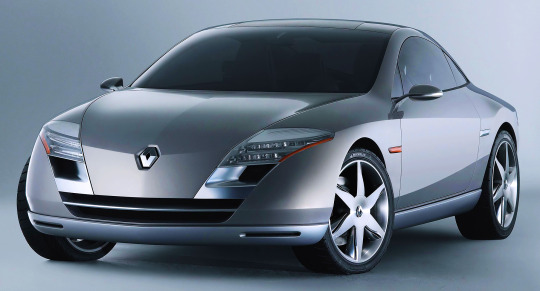
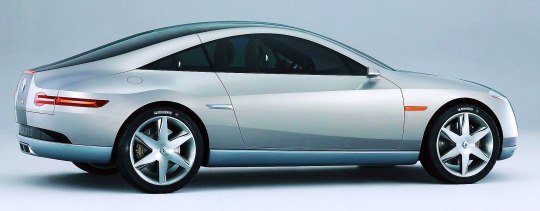
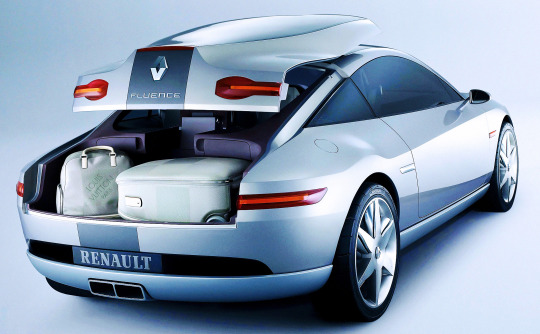
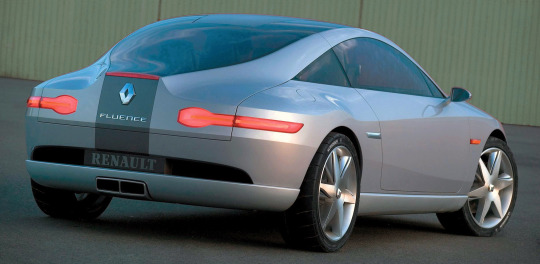
Renault Fluence Concept, 2004. A compact coupé prototype styled by Renault’s design chief (until 2009), Patrick le Quément.
#Renault#Renault Fluence#Renault Fluence Concept#concept#prototype#compact coupé#design study#Patrick le Quément#2004
117 notes
·
View notes
Text
BMW Unveils Two New Models in Indonesia

Thus, the BMW Group Indonesia has unveiled its Two M high-performance models added premium models with high regard for committed track enthusiast and street driving enthusiast enthusiasts. Launching takes place at a time when the company launches the extension of official BMW dealer networks as it spreads to fill demand in Indonesia for more of its M Series.
BMW Expands M Line Dealer Network The country's high-performance car market will be explored aggressively, BMW Group Indonesia President Director Peter Medalla said. Growth in the M Series follows a milestone in the Indonesian automotive market where high-performance models accounted for 10 percent of total BMW sales last year. "Last year, Indonesia reached its highest M market penetration rate in the world: one in ten BMW vehicles sold was a high-performance model," Medalla said during the launch on Wednesday, 30th October. To cope up with the increased demand, BMW Indonesia expanded its dealership network that covers BMW Eurokars, BMW Tunas, BMW Performance Motors Indonesia, and BMW Plaza. Each dealership can handle BMW's high-performance sub-brand sales and services.
BMW M4 CS: Reborn for Track and Road BMW M4 CS comes sold with modern technology for enhancement of this chassis to work on a race track as well, off or on. Indeed, BMW M4 CS is an example of precise models because the chassis brings multiple personalization tuning: from the camber as well as the wheel set up settings and spring damping, all coupled with upgraded anti-roll rods. For this, it will most definitely take anyone through on the ride at every twisting of its engine.
Main features of the BMW M4 CS Engine: 6 cyl. with 550 Hp, 20 hp more than the M4 Competition Coupé M xDrive Torque: Sprints to 650 Nm Acceleration: 0 to 100 km/h only in 3.4 sec, 0 to 200 km/h in 11.1 sec Top Speed: Attains 302 km/h This lightening, the BMW M4 CS has further increased its sportiness by using Carbon Fibre-Reinforced Plastic; therefore, the carbon roof lowers the center of gravity of the car so that the car will be more agile and stable.
BMW M2 Special Edition This is BMW's very characteristic M Performance Parts, looking for aggressiveness in visual appearance as well as designing style through the use of diffuser parts, air inlets, side panel trim, and mirror caps. The car comes in a 6-cylinder engine mated with the BMW M2 Steptronic transmission in eight accelerations, giving a performance of extreme highness, still appearing in an extremely compact shape. Main Characteristics of BMW M2 Special Edition: Engine: Segaris 6-cylinder unit with 460 horsepower Torque: Up to 550 Nm Acceleration: 0 – 100 km/h: 4.1 seconds Transmission: M Steptronic with Drivelogic
The BMW M2 Special Edition has a harmonious 50:50 weight distribution and Adaptive M Suspension. The car has been designed as a model for those seeking precision and versatility in the art of driving. Pricing in Indonesia Both are already available in the country. BMW M2 Special Edition is priced at IDR 2.167 billion. BMW M4 CS at IDR 2.990 billion.
For more updated information about the automotive market, the latest cars & bikes, Please visit our website https://www.autoini.com
#indonesia#vehicle#autoini#jakarta#automobile#bali#automotive#cars#autos#latest car#BMW#BMW M4#BMW m2#Luxury Car#Sports car#convertible#classic cars
0 notes
Text
smart Opens Showroom and Launches smart #3 in Singapore
Cycle & Carriage and smart Expand EV Offerings with New Showroom and SUV Coupé SINGAPORE – Media OutReach Newswire – 4 October 2024 – Cycle & Carriage and smart Automobile have announced the official opening of the smart showroom at Level 3 of the Mercedes-Benz Center, located at 301 Alexandra Road. The new showroom features the smart #1 compact SUV and marks the launch of the smart #3, the…

View On WordPress
0 notes
Photo










Alfa Romeo 1900 SS Ghia ( 1 of 10).
The Alfa Romeo 1900 was Alfa Romeo's first production model after the Second World War. Smaller and more compact than the pre-war 6C 2500, it featured a 1,975 cc DOHC in-line four-cylinder engine with Weber carburettors, five-speed manual gearbox, independent front suspension with double A-arms, coil springs and hydraulic dampers, live axle rear suspension with trailing links, and four-wheel drum brakes. It was introduced as a saloon in 1950, and a year later the sportier 1900C Sprint Coupé was introduced with a shorter wheelbase. Alfa Romeo continued to squeeze more power out of the two-litre engine, with the Super Sprint version eventually producing 115 bhp. Ghia designed around 10 different body styles on the 1900C chassis.
Our Alfa Romeo 1900C "Super Sprint" is a very rare and unusual "concept car", built during the golden era of Carrozerria Ghia. Only 10 of these stunning examples were built, each one different from the last. By modifying the headlights, bumpers, rear lights and interior, Ghia managed to make each car unique. The particularly futuristic design was the work of Giovanni Savonuzzi, who was respected for his work at Cisitalia, where he was a designer, but soon proved his worth at Ghia and became chief designer. This example is undoubtedly one of the rarest 1900s built. For chassis number 01838, Savonuzzi designed the so-called "floating headlights", which seem to float in the air intake opening. On the other hand, the panoramic windscreen and the modest tail fins give it a slightly American touch. The engine is a cast-iron 1308 block of 1975 cc and 115 bhp, with an aluminium cylinder head, twin overhead camshafts and twin Webers. The underlying chassis and drivetrain is a much sought-after 1900SS from Alfa Romeo, the steering wheel and extremely smooth 5-speed gearbox are courtesy of Nardi, and the wheels are the original Borrani 400MMs that were sometimes used by early competition Ferrari’s.
103 notes
·
View notes
Text
Elantra N et le rassemblement de Terrebonne
Le 14 septembre 2024
Les constructeurs américains ne sont plus dans le coup…surtout lorsqu’il s’agit de petites berlines agréables à conduire. Ils sont devenus des spécialistes de VUS et de pick-up de tout gabarit sauf pour quelques sportives ultra-puissantes à prix exorbitants. Ils semblent avoir laissé le créneau des berlines et des coupés compactes et même intermédiaires aux constructeurs d’autres pays. C’est ainsi que les constructeurs sud-coréens ont hérité d’un espace de choix dans le domaine des petites berlines que l’on croyait attribué aux européens et aux japonais. Comment s’en sont-ils sortis? Mieux que l’on pense. Le meilleur exemple nous vient de Hyundai, cet important producteur de voitures aux dimensions raisonnables capable de concurrencer surtout les Japonais! Et l’Elantra est fort possiblement son meilleur argument sur le marché!
L’Elantra? Cette belle berline qui réussit à se distinguer dans le créneau des « petites » intermédiaires? Pourquoi pas? Néanmoins, c’est bien beau de réussir dans un créneau populaire mais… « ennuyant » ? C’est là que la concurrence a compris qu’il fallait créer des autos de cette catégorie avec un peu plus de « plaisir de conduite »! Cette concurrence, c’est Honda et surtout Volkswagen qui auront su concocter des versions plus « amusantes » de leurs berlines … « ennuyantes » comme les Honda Civic Si, Toyota Corolla GR, les VW GTI et autres! Il n’en fallait pas plus pour que les décideurs de Séoul en arrivent à des Elantra plus « sportives ». Et de là sont nées les Elantra N.

La berline Hyundai Elantra N affiche un avant très menaçant! (Photo Éric descarries)
Elantra N! Le nom ne nous dit pas grand-chose. Mais lorsqu’on en examine les caractéristiques, on écarquille les yeux! Hyundai Canada m’a récemment confié une de ces berlines Elantra N et l’effet fut plus étonnant que prévu!
Qu’est-ce qu’une Hyundai Elantra N? Au départ, je le répète, c’est une berline dite intermédiaire (moi, je la trouve plutôt compacte…) avec une présentation plus sportive incluant une calandre repeinte en noir, un pare-chocs avant abaissé, un déflecteur arrière et des diffuseurs intégrés. Ajoutez à cela des roues plus excitantes, des pneus Michelin larges et une peinture avec des lignes évidentes et le tour est joué. On obtient alors une berline au look sportif.

Même de l’arrière, on ne peut ignorer la version N de la récente Elantra. (Photo Éric Descarries)
Cependant, l’habit ne fait pas nécessairement le moine. L’Élantra N (à ne pas confondre avec l’Elantra N Line!) cache sous son capot une mécanique plus élaborée malgré le fait que la voiture demeure une traction avant seulement. Son moteur est un « modeste » quatre cylindres turbocompressé à double arbre à cames en tête de 2,0 litres qui a déjà équipé le sportif coupé Veloster. Il fait alors 276 chevaux (286 avec la boîte automatique). La voiture qui m’a été confiée était équipée d’une boîte manuelle à six rapports ce qui, à mes yeux, fait encore plus sportif! Ses roues de 19 pouces en alliage léger étaient chaussées d’impressionnants pneus Michelin Pilot Sport 4S 245/35 ZR. Le freinage se fait par des disques aux quatre roues dont ceux d’avant font 14 pouces et ceux d’arrière font 12 pouces. Quant au poids, l’auto pèse quelque 3200 livres.

Le tableau de bord de l’Elantra N est plutôt moderne. (Photo Éric Descarries)
L’intérieur de l’Elantra N est pareil à celui des autres Elantra de tourisme. Sauf que sa finition y est plus « sportive »! En fait, mais elle est surtout plus plastique! Le tableau de bord (pareil à l’Elantra de base) offre une ligne classique mais son instrumentation peut être modulable avec des cadrans « vidéo » plus réguliers ou plus sportifs selon la commande électronique du comportement de la berline. Celle-ci se fait par l’ordinateur central qui permet au conducteur de « jouer » avec ces modes de conduite. Si la version régulière demeure plutôt discrète, le choix de la « Sport » raffermit la suspension et l’effort au volant et rend l’échappement un peu plus bruyant.

Les places arrière sont très élégantes mais surtout spacieuses pour une berline de ce calibre! (Photo Éric Descarries)
Outre cela, Hyundai a choisi d’équiper cette N avec des sièges avant plus fermes et plus moulants qui devraient être utiles si l’on fait régulièrement des exercices de conduite (« lapping ») mais qui peuvent s’avérer moins confortables sur de longues distances. Ces sièges procurent un excellent support latéral mais, pour de longs déplacements, je suggérerais des coussins supplémentaires de Canadian Tire!

Le coffre est suffisant mais on ne peut pas l’agrandir car les barres de renforcement (rouges) empêchent le dossier des sièges d’arrière de se replier. (Photo Éric Descarries)
Les places arrière sont plus conventionnelles mais aussi plus accueillantes…et confortables à la longue. La malle est relativement utile mais sachez que le dossier des sièges d’arrière ne s’abaisse pas. Hyundai y a choisi le croisement des « volumes » pour y ajouter des barres de renforcement devant raffermir la souplesse de la coque pour aider la voiture à être plus ferme, moins souple et à moins « tordre » en compétition. Car, c’est cela une Elantra N, une auto de course déguisée pour la rue!
Sur la route
L’Élantra N est une superbe petite berline pour des déplacements urbains. Mais on sent qu’elle voudrait être « brassée ». Sa conduite est simple et agréable même si c’est une auto à boîte manuelle, ce qui ne me dérange pas malgré mon âge qui avance de plus en plus. C’est quand même drôle de voir un « p’tit vieux » qui aime plutôt le passage mécanique des rapports que la paresse de laisser la boîte automatique tout faire (oui, je possède et conduis des Lincoln dont ma « sportive » MKZ mais j’ai aussi une Jeep à boîte mécanique et ma Cobra à cinq vitesses, ne l’oubliez pas!).
Toutefois, il faut savoir choisir ses routes de campagne pour savoir profiter du comportement sportif de cette auto. Les larges mais très « gommants » pneus Michelin apportent beaucoup à ce comportement mais en vérité, on aimerait pouvoir profiter d’une petite piste comme le « défunt » circuit de l’Autodrome Saint-Eustache pour vraiment exploiter les capacités de l’Elantra N!

On ne peut malheureusement pas voir le moteur de l’Elantra N caché sous le couvercle de plastique mais on peut juger de la qualité du travail de finition. (Photo Éric Descarries)
Lorsqu’on place la commande N en action (au volant), la voiture change un peu. Ce n’est pas une transformation dramatique mais on se sent plus au volant d’une sportive avec une suspension plus ferme, une direction plus responsive et un échappement légèrement plus libre. Mais le plaisir ne peut durer qu’un petit moment vu les restrictions du code de la route (pourquoi n’avons-nous plus de ces courtes pistes comme Saint- Eustache pour vivre ces sensations? Qui a permis la construction de ces maisons si près d’une piste de course qui, avouons-le, n’était pas aussi bruyante à tous moments?).
Je suis un voyageur. Je viens de revenir encore une fois d’Ogunquit dans le Maine (cette fois-ci avec ma MKZ). Je préfère les grand-routière aux sportives furtives. Malgré tout, je me suis rendu de Laval à Gatineau avec ma compagne pour assister à un pagean aérien (je suis mordu d’aviation et des spectacles comme celui des Thunderbirds américains (F-16), des Red Arrows britanniques ( BAE Hawk T.1) et des Snowbirds canadiens (Canadair CT-114 Tutors). La route semble facile, de Laval à Gatineau par la 15 nord et la 50 ouest mais suffisante pour évaluer les aptitudes routières de l’Elantra N.
Si j’ai su m’amuser un peu avec le comportement routier de la N sur d’autres routes locales sinueuses, cette petite berline de Hyundai est moins indiquée pour de longs voyages. Les sièges si fermes avec une excellente rétention dans les courbes deviennent trop durs pour de longs déplacements. On peut s’y faire avec la suspension plus dure en autant que la route soit bien pavée (ce qui n’est pas nécessairement le cas au Québec!). Et les divers revêtements du pavé autoroutier transmettront beaucoup de bruit dans l’habitacle (ce ne sont pas les pneus…c’est l’isolation des puits d’ailes!).

Ces pneus Michelin de l’Elantra N font grandement partie de l’excellente tenue de route de la berline. (Photo Éric Descarries)
En passant, les performances de l’auto sont remarquables avec une possibilité de passer de 0 à 100 km/h en moins de six secondes (si vous êtes rapide au levier de vitesses) et des reprises facilitant les dépassements. La direction est précise et le freinage puissant (avec la N). Toutefois, il faut se souvenir que l’Elantra N est une sportive unique conçue pour rivaliser avec d’autres voitures du même genre. Il faut savoir aimer conduire une voiture nerveuse et sauvage en même temps. Incidemment, j’ai bien apprécié la rigidité de sa caisse et la solidité de la construction. Conclusion, le constructeur sud-coréen Hyundai est capable de se mesurer à sa concurrence, surtout européenne!
Question consommation, j’ai obtenu une moyenne de quelque 9,0 l./100 km ce qui ressemble à ce que le constructeur publie (11,0 en ville, 8,1 sur toute pour une moyenne prévue de 9,7). Le prix annoncé (2024) est de 41 896 $ (incluant le transport et la préparation) alors que le constructeur lui accorde une garantie de 5 ans ou 100 000 km, ce qui est plutôt intéressant. Parmi ses concurrentes, on retrouvera les Honda Civic R ou Si, Toyota Corolla GR, VW Golf GTi et quelques autres voitures du genre.
Encore une fois, ne pas confondre l’Elantra N avec la version N Line qui est moins élaborée. La version N est nettement plus sportive. Moins confortable mais plus excitante à conduire. Sachez aussi en passant que ces Elantra sont de féroces compétiteurs en course automobile dans leur catégorie. Intéressant, n’est-ce pas?
Le rassemblement des anciennes à Terrebonne
À la dernière minute, quelques heures avant de publier ce blogue, j’ai su que le populaire rassemblement des voitures anciennes à l’Île-des-Moulins de Terrebonne était de retour après quatre ans d’absence. Et, à ma grande surprise, il y avait plus de voitures que je ne m’étais imaginé. Bien entendu, j’aurais voulu y voir plus de « vraies » anciennes des années vingt ou trente mais, en revanche, il y avait plusieurs voitures d’intérêt!

Malgré l’annonce de dernière minute, les amateurs de voitures anciennes ont été bien servis à Terrebonne. (Photo Éric Descarries)

Une des voitures les plus spectaculaires était certes le cabriolet Chrysler New Yorker 1956 du vétéran Robert Aubin (frère du regretté Claude Aubin de l’Autodrome Saint-Eustache). (Photo Éric Descarries)

Fort possiblement la plus vieille auto sur le site, cette Buick 1908 ne manquait pas d’attirer l’attention! (Photo Éric Descarries)

Autre véhicule spectaculaire et surtout très rare (704 unités de produites à la main en 1957 et 1958), cette Cadillac Eldorado Brougham 1957 affichait une plaque du Québec! (Photo Éric Descarries)

Cette Mercury Park Lane de 1957 était équipée de phares doubles pour la première fois et surtout de beaucoup de chrome autour de ses lignes « futuristes » ! (Photo Éric Descarries)

Coup de cœur! Cette Austin 1949 de Laval m’a séduit! (Photo Éric Descarries)

Un certain nombre de petites Fiat 500 de 1957 à 1975 s’était rassemblé près de la rivière! (Photo Éric Descarries)
0 notes